Health & Wellbeing
Understanding Cold Sensitivity in Older Adults
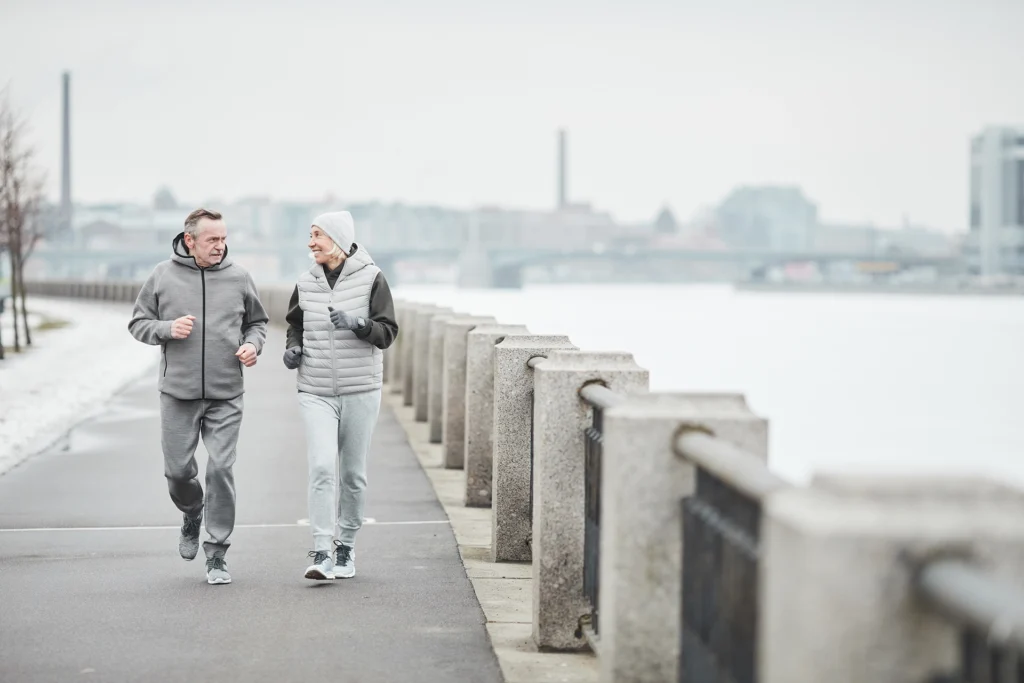
“It’s freezing in here!”
Every winter, I hear this statement from participants across my different older adult classes – even when the thermostat reads a normally comfortable 18°C. While some younger class members are already warming up and shedding layers, those pushing 70 years or older remain bundled and shivering, struggling to get comfortable.
These comments aren’t just about personal preference – they’re valuable reminders of how our body’s ability to regulate temperature changes with age.
Thermoregulation is our body’s internal thermostat. It orchestrates a complex interplay of physiological responses to keep our core temperature within a narrow, healthy range, regardless of whether we’re exercising in a brisk studio or braving a winter’s walk to class. For older adults, this system doesn’t work as efficiently as it once did, making them more susceptible to cold-related issues. As fitness instructors, recognising these vulnerabilities is a valuable way we can understand our ageing participants better, and create safer experiences for them during winter.
“I just can’t seem to warm up these days …”
There’s a reason why many older adults choose to migrate to warmer climates during winter – or even relocate permanently – as they age. The ageing body makes it harder to stay warm and easier to lose body heat, explaining why the cold can feel so relentless for older adults. Here are a few of the issues affecting our older participants.
"I just can't seem to warm up these days..."
As we age, both subcutaneous fat and muscle mass decline significantly. Fat acts as the body’s natural insulation, slowing heat loss, while muscle is the primary source of heat generation during movement. The loss of these tissues means older adults not only lose heat faster but also generate less internal warmth during activity. This double whammy leaves them highly vulnerable to cold stress.
Metabolic rate slows and brown fat shrinks
Metabolism – the engine that burns energy to produce heat – slows down with age, driven largely by muscle loss and reduced physical activity. Compounding this, brown adipose tissue (BAT), a specialised fat that rapidly generates heat in response to cold, diminishes over time. This means the body’s internal heating system becomes less responsive and less powerful, impairing the ability to ramp up heat production when it’s needed most.
Circulatory efficiency deteriorates
Ageing stiffens blood vessels and weakens cardiovascular responsiveness. This disrupts the body’s ability to constrict blood flow to the skin to conserve heat in cold environments. Instead of redirecting warm blood to vital organs, older adults experience greater peripheral heat loss through the skin, accelerating core temperature decline.
Shivering response becomes blunted
Shivering is the body’s rapid-fire heat generator, producing warmth through involuntary muscle contractions. However, with age, both muscle mass and neuromuscular function decline, blunting this critical response. Older adults simply can’t shiver as effectively or intensely, reducing their capacity to generate emergency heat during cold exposure.
Diminished temperature sensation delays response
Thermoception – the sensory ability to detect temperature changes – deteriorates with age due to reduced sensitivity of peripheral nerve endings. Older adults may not perceive cold early enough or recognise subtle signs of hypothermia, such as mild confusion or shivering, delaying protective actions like adding layers or increasing movement.
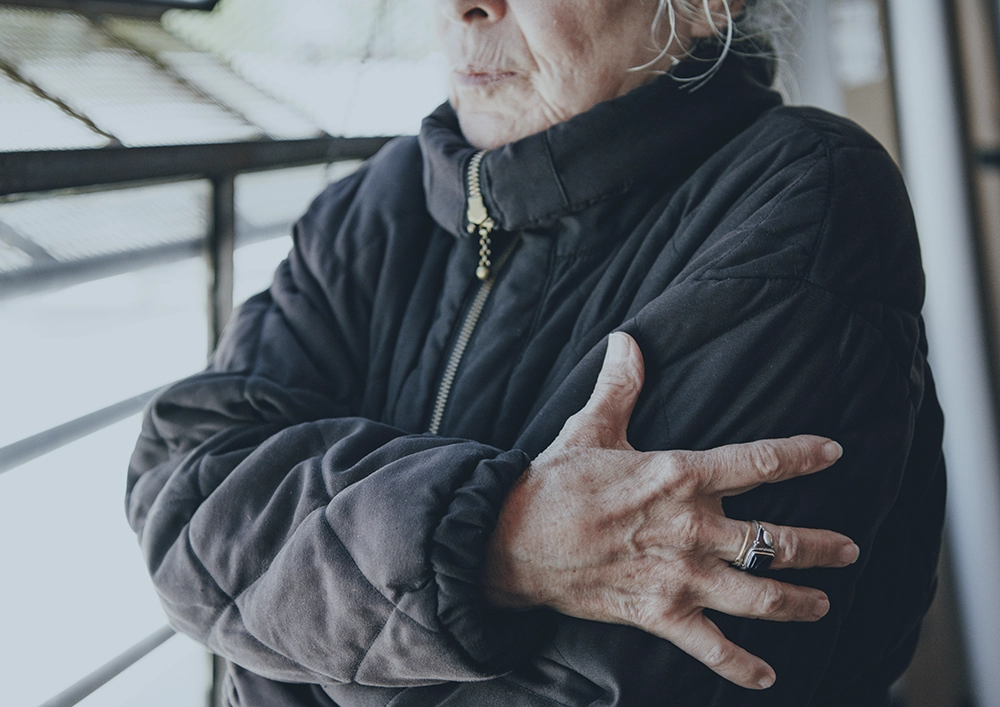
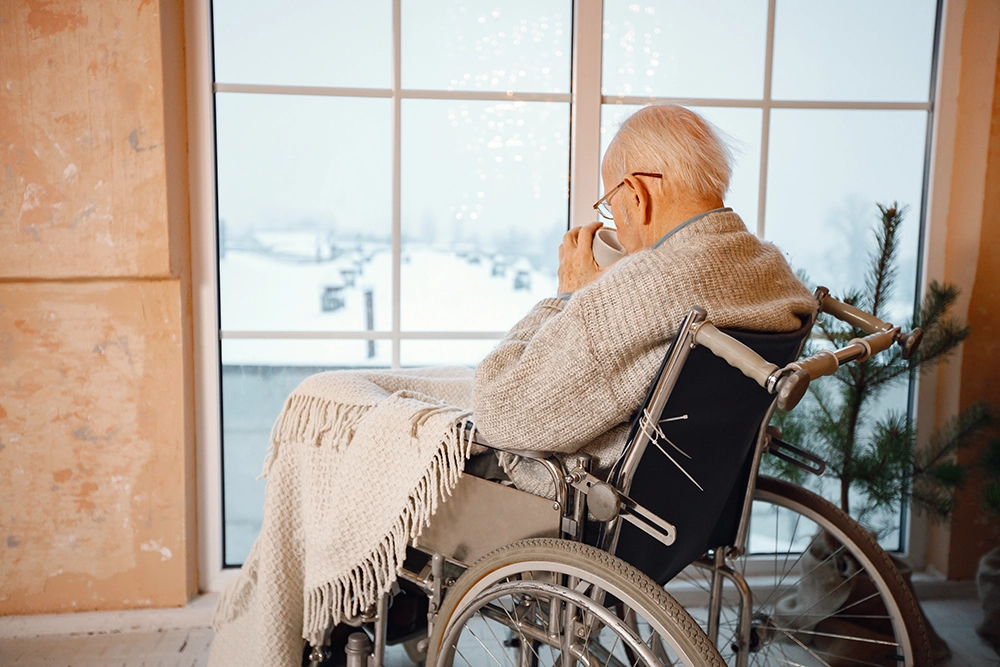
Limited mobility reduces heat generation
Low mobility – due to joint pain, muscle weakness, neurological conditions, or frailty – limits muscle activation and movement, which are key sources of internal heat. With less movement, the body produces less warmth, and joints become stiffer while reaction times slow. This also means limbs are harder to move and take longer to warm up, as reduced blood flow and muscle activation make it difficult for these areas to regain flexibility and comfort, especially after periods of inactivity or at the start of exercise.
Chronic conditions amplify vulnerability
Chronic health conditions common in older adults – such as diabetes, cardiovascular disease, and arthritis – disrupt the body’s normal thermoregulatory responses, due to damaged blood vessels and nerves. Many of these conditions are also associated with chronic inflammation, which further impairs the body’s ability to generate and conserve heat. Additionally, medications like beta-blockers, diuretics, and sedatives can blunt shivering, sweating, and vascular responses, further reducing the body’s defenses against cold.

“Does it matter if I can’t feel my fingers this morning?”
Understanding why thermoregulation declines with age helps us appreciate the real-world effects this has on our participants. Let’s look at what these changes mean for older adults in our classes.
Increased risk of hypothermia
Older adults are much more vulnerable to hypothermia during winter – even indoors. Because of the reasons we’ve already touched on, normal body temperature in older adults tends to be slightly lower than the typical 36°C to 37°C range. Add to that the reduced ability to sense and respond to cold, and it might not take much for the core temperature to drop below 35°C and into hypothermia. When this happens, multiple organ systems are affected, leading to confusion, shivering, pale skin, slowed reactions, and impaired coordination.
Cold-related complications
Beyond hypothermia, older adults are also vulnerable to cold-related complications. These include chilblains (painful, itchy inflammation of small blood vessels in the skin), cold urticaria (hives triggered by cold), and Raynaud’s phenomenon (reduced blood flow to extremities, where one or multiple fingers and toes turn white). These conditions can cause discomfort, skin changes, and increased sensitivity to cold, making exercise less enjoyable and increasing the risk of further cold exposure.
Increased risk of injuries
Cold environments significantly increase the risk of musculoskeletal injuries in older adults too. Lower temperatures reduce muscle elasticity and joint flexibility, slowing reaction times and compromising movement control. This raises the likelihood of acute injuries like muscle strains, ligament sprains, and falls – especially if participants haven’t warmed up thoroughly. Age-related factors such as reduced blood flow, increased joint stiffness, and pre-existing conditions like arthritis further heighten this risk.
Cold can also trigger or worsen chronic pain in the neck, shoulders, back, and extremities, making proactive warm-ups and maintaining a warm exercise environment essential for injury prevention.
Reduced engagement and commitment to classes
No one wants to come into a cold room and shiver through an exercise class. When classes feel chilly and uncomfortable, motivation drops, and both the social and physical rewards of group activity are lost. Staying home may seem more appealing, but it doesn’t help participants with mobility, warmth, or overall wellbeing. It doesn’t help them build muscle either, or get all the social benefits of a group fitness class. Laughter, sparked by friendly conversation and group connection, is a great way to warm up too! Participating in exercise, especially on cold days, gets the body moving, generates internal heat, and leaves everyone feeling warmer and better off, long after class ends!
“Can you turn the heating up, please?”
So, how can we help our participants through the colder months? If you notice participants feeling chilly, there are several practical steps you can take to support their comfort and safety. Use the following strategies to help everyone stay warm, engaged, and healthy throughout the winter months.
Nudge up the heating
Don’t hesitate to turn up the heating before class begins, even if it’s just for a short while until everyone has warmed up. Arriving early to ensure the room is comfortable makes a big difference – participants are more likely to enjoy the session and stay positive when they aren’t distracted by the cold. A warm environment helps everyone move more easily and safely right from the start.
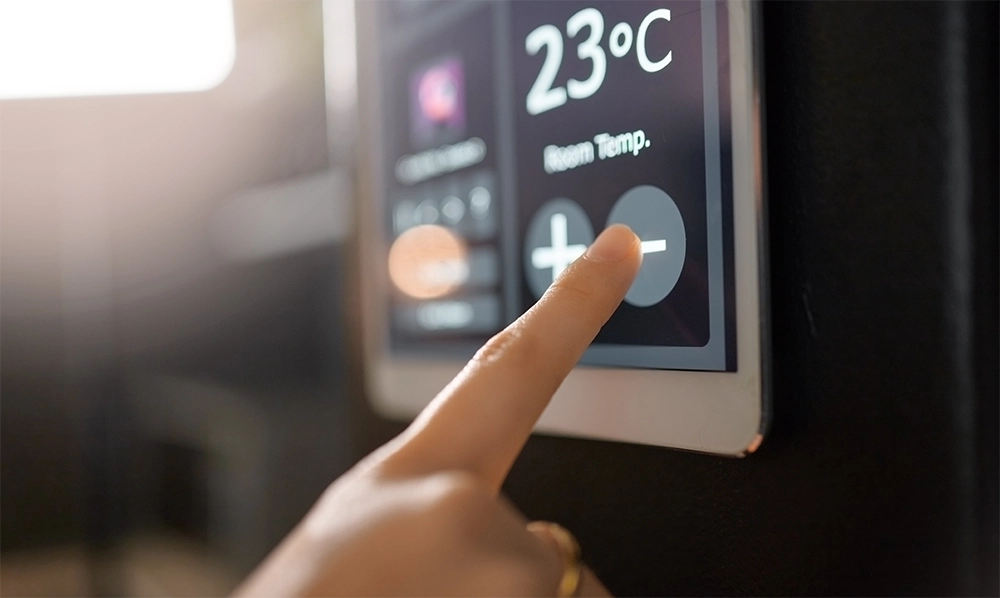
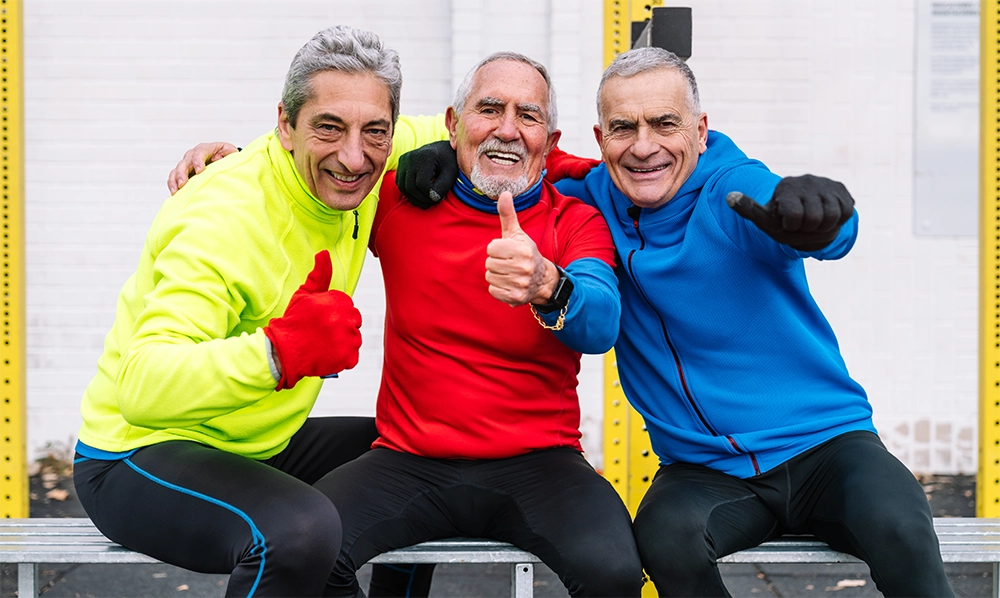
Encourage layered, warm clothing and proper footwear
Remind participants to dress in layers that can be adjusted as they warm up. Thermal tops, light jackets, and moisture-wicking fabrics help retain heat without causing overheating. Warm socks and supportive, non-slip shoes are essential for both warmth and safety.
Start with longer, gentle warm-ups
Begin each class with an extended, low-intensity warm-up to gradually raise body temperature and increase blood flow to muscles. This not only helps with thermoregulation but also reduces the risk of injury by improving flexibility and joint mobility.
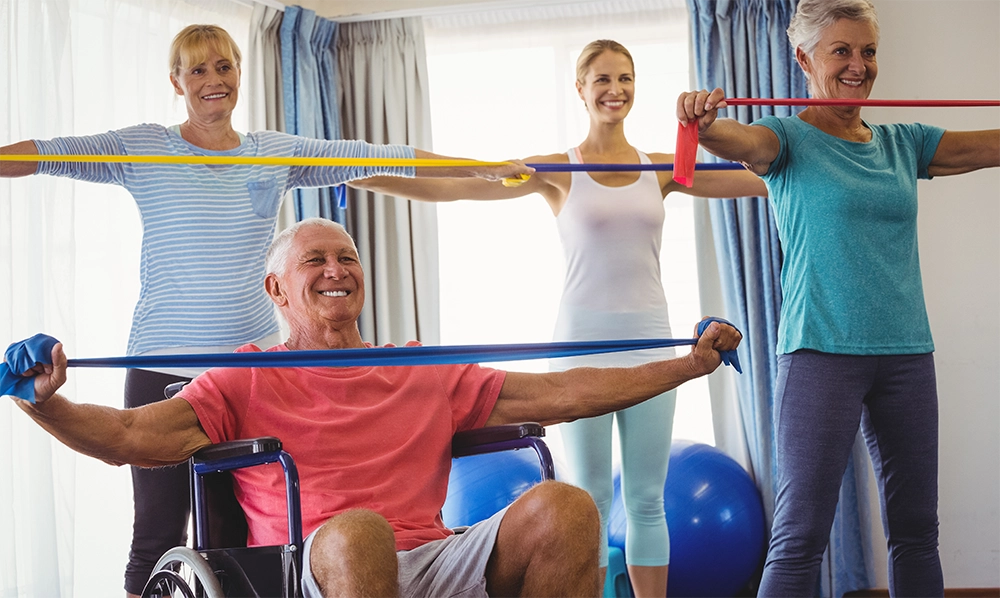
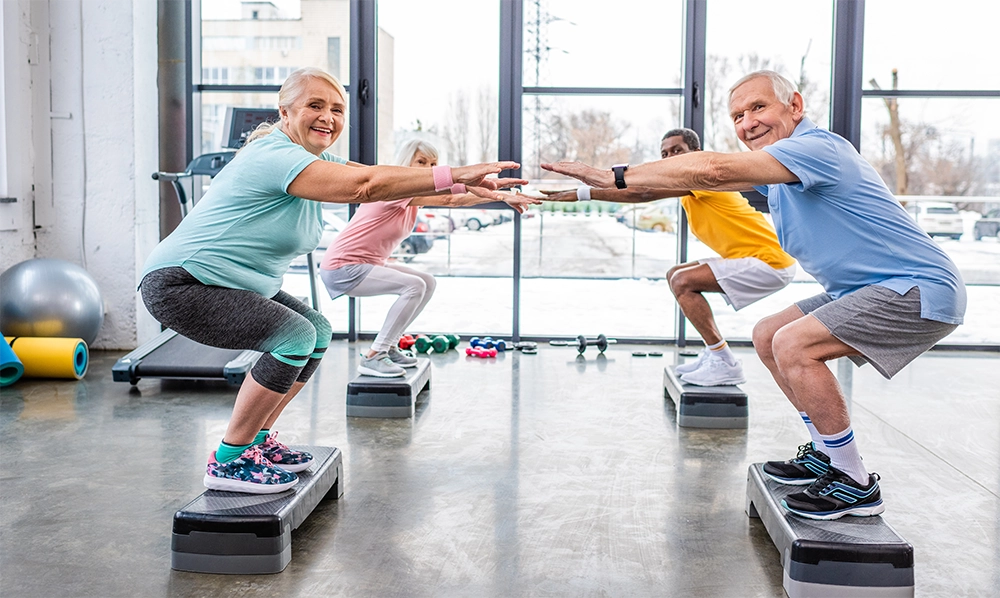
Keep classes moving and minimise inactivity
Design sessions to minimise extended periods of standing or sitting still, which can lead to rapid cooling. Alternate between different activities or use gentle marching in place to keep everyone moving, even during instruction or demonstration.
Suggest warm drinks and hydration breaks
Encourage participants to add warm water to their drink bottles, so the drinks break can be both comforting and hydrating. Remind everyone that hydration is important, even in winter, as dehydration can impair thermoregulation.
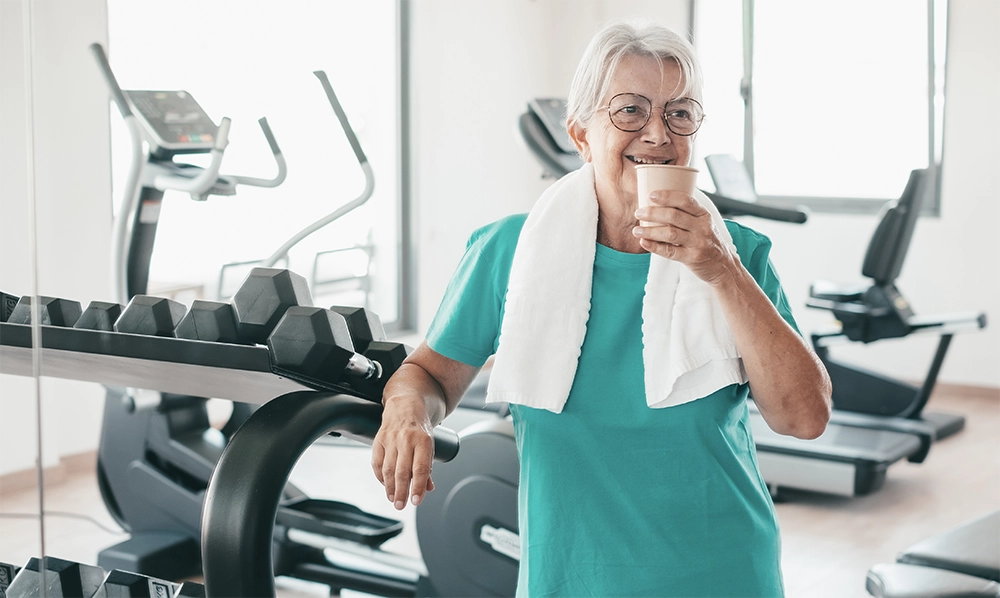
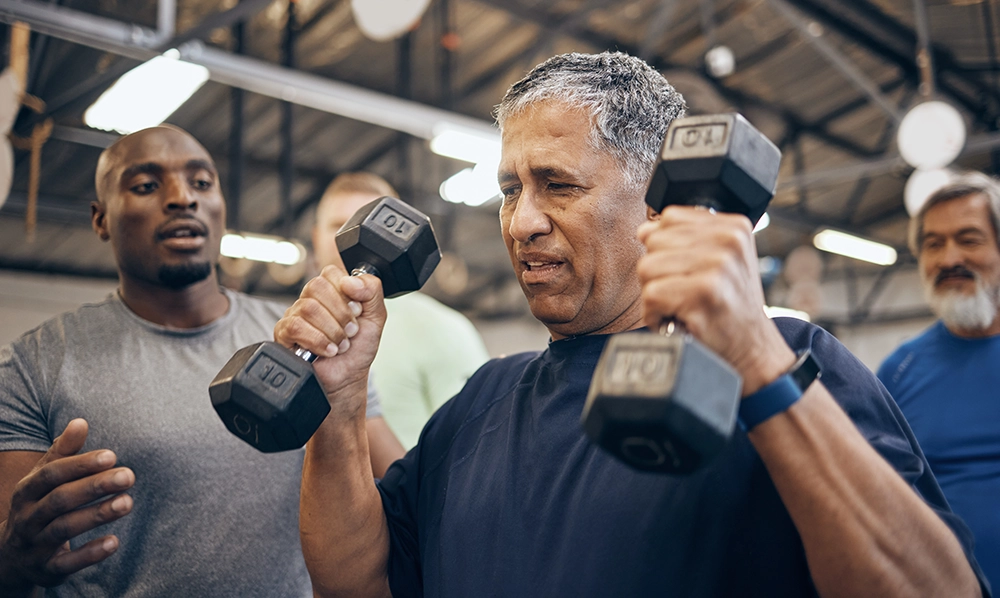
Watch for early signs of cold stress
Stay alert for shivering, confusion, pale or cool skin, or complaints of feeling cold (directly or indirectly!). If you notice these signs, have the participant add a layer and offer a warm drink. Don’t hesitate to call for medical assistance if symptoms escalate.
“Ooh, it’s lovely and warm in here.”
Thermoregulation is a complex, often-overlooked aspect of group fitness for older adults – especially in winter. As fitness professionals, our proactive, science-informed approach can make all the difference. By understanding the physiological changes that come with age, recognising the signs of cold stress, and adapting our classes accordingly, we help keep our participants safe, comfortable, and engaged. And even more importantly – wanting to come back the following week. Ultimately, this empowers older adults to reap the full benefits of exercise year-round, supporting their health, independence, and quality of life.
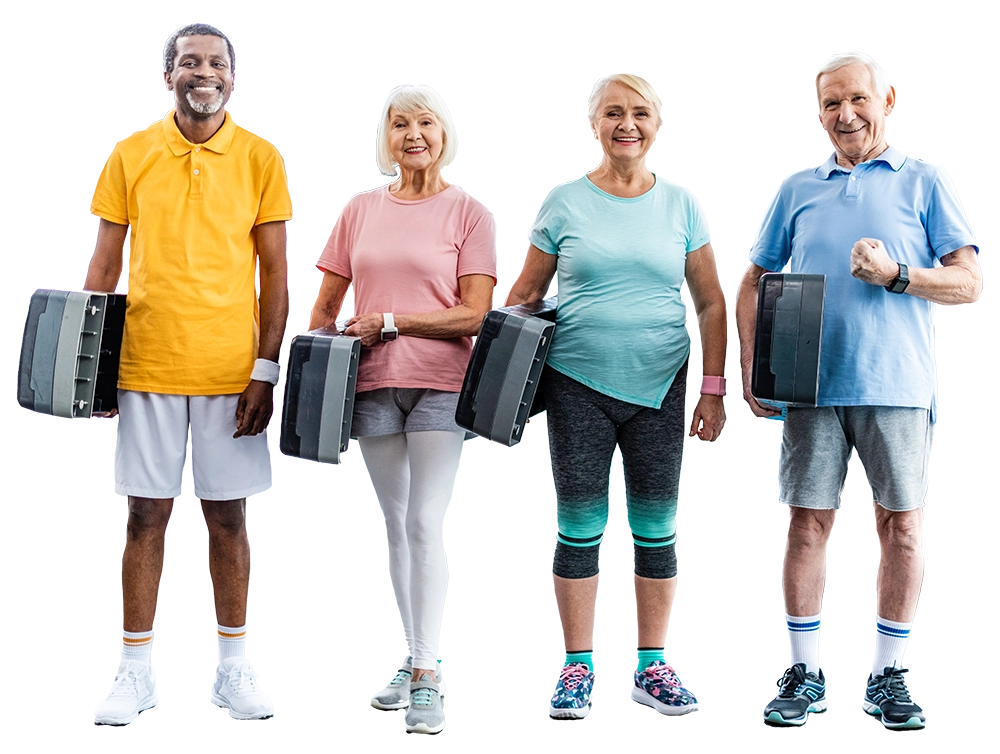
References
- Bach, A. J. E., et al. (2020). Experimental research in environmentally induced hyperthermic older persons: A systematic quantitative literature review mapping the available evidence. Korean Journal of Thermal Medicine, 11(3), 224–262.
- Kenney, W. L., & Munce, T. A. (2003). Aging and human temperature regulation. Journal of Applied Physiology, 95(6), 2598–2603.
- Greaney, J. L., Kenney, W. L., & Alexander, L. M. (2016). Sympathetic regulation during thermal stress in human aging and disease. Autonomic neuroscience: basic & clinical, 196, 81–90.
- Jung, D., Kim, H., An, J., & Hong, T. (2023). Thermoregulatory responses of young and elderly adults under temperature ramps. Building and Environment, 246, 110834.
- Notley, S. R., et al. (2023). Age alters the thermoregulatory responses to extreme heat during activities of daily living. Journal of Applied Physiology, 135(2), 456–467.
- Shibasaki, M., Okazaki, K., & Inoue, Y. (2013). Aging and thermoregulation. The Journal of Physical Fitness and Sports Medicine, 2(1), 37–47.
- Stapleton, J. M., & Kenny, G. P. (2018). Aging and Thermoregulatory Control: The Clinical Implications of Age-Related Decrements in Thermoregulatory Control. Temperature, 5(2), 201–214.
- Van Someren, E. J. W. (2002). Circadian and age-related modulation of thermoception and temperature regulation: mechanisms and functional implications. Ageing Research Reviews, 1(4), 721–778
- Xu, J., Lu, Y., He, J., & Lu, Y. (2024). A review on thermal characteristics of the elderly and methods for maintaining their thermal comfort in cold winter season. Building and Environment, 112469.
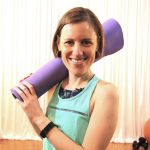
Trudi Edmeades
Trudi Edmeades is the co-founder of Third Age Fitness, an organisation that focuses on training professionals in all aspects of older adult fitness. Their online course, Standing Bodyweight for Older Adults, includes over 180 equipment-free exercises that can be combined with cognitive challenges for older adults and seniors.